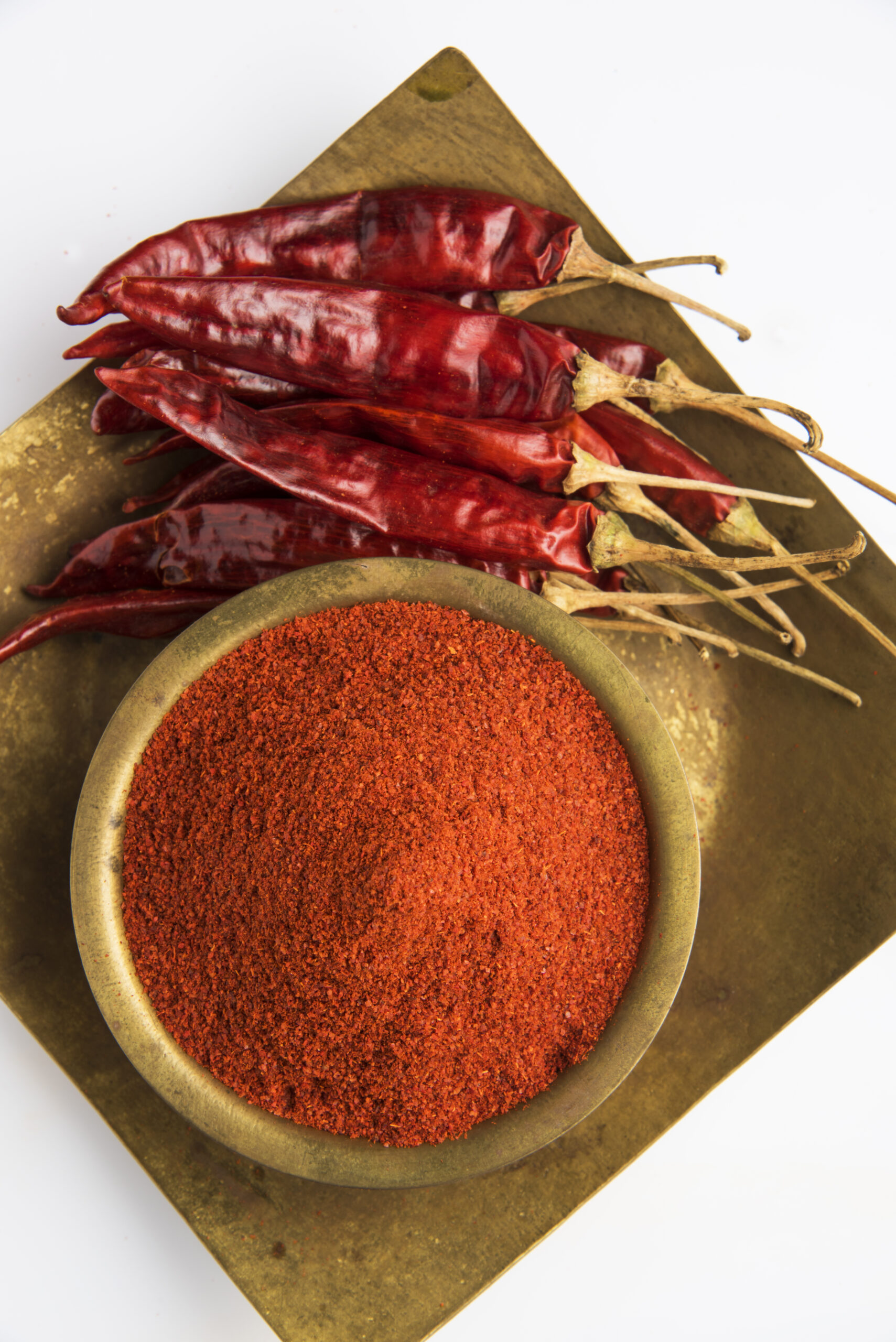
What Is Kashmiri Red Chili?
Kashmiri red chili is a variety of Capsicum annuum grown mainly in Jammu and Kashmir and parts of northern India. It is well known for its deep red color and mild heat, which makes it useful when you want a bright appearance without a strong burn. The chili has a light, slightly fruity aroma and blends easily with other spices.
It is often used in curries, tandoori marinades and mixed spice powders to improve color and give a gentle, balanced warmth. Because of its mild profile, many cooks combine it with hotter chilies to keep flavor and color in harmony.
Quick facts
- Scientific name
- Capsicum annuum
- Origin
- Jammu and Kashmir, India
- Heat level
- Mild; typically 1,000–2,000 Scoville Heat Units
- Primary uses
- Adding color and gentle warmth to sauces, curries, and marinades
- Flavor notes
- Lightly fruity with a clean aroma
- Why choose it
- Bright red color without overpowering heat

The Drying and Processing Method
After harvest, Kashmiri red chilies are sun-dried in the cool mountain air, which helps preserve their deep color and mild aroma. Farmers turn them regularly to dry evenly without losing character.
In some areas, low-heat dehydrators are used for consistency, especially during damp seasons. Once crisp and bright, the chilies are stored whole or ground into the famous red powder that colors Indian curries.
Forms You’ll Find It In
Kashmiri red chili reaches kitchens in a few simple yet versatile forms:
-
Whole dried chilies: Used to add mild heat and color to oils, curries, and sauces.
-
Chili flakes: Add mild heat and bright color to marinades and toppings.
-
Chili powder: The most common form, prized for its rich color and balanced flavor.
Flavor Profile
Kashmiri red chili offers a gentle warmth with a hint of sweetness and smokiness. Its flavor is smooth, balanced, and aromatic; adding depth and vibrant color without strong heat. This balance makes it ideal for those who prefer flavor over fire.
Culinary Uses Across India and Beyond
Across India, Kashmiri red chili is the secret behind rich gravies and glowing curries.
-
In Kashmir: It colors classics like Rogan Josh and Yakhni with deep red color and mild warmth.
-
Across India: Used in tandoori marinades, biryanis, and masalas to balance spice and color.
-
Globally: Chefs use it as a natural coloring agent in sauces, soups, and spice blends for its rich tone and mellow flavor.
Whether stirred into oil or dusted over curries, it turns simple dishes into feasts for the eyes and palate.
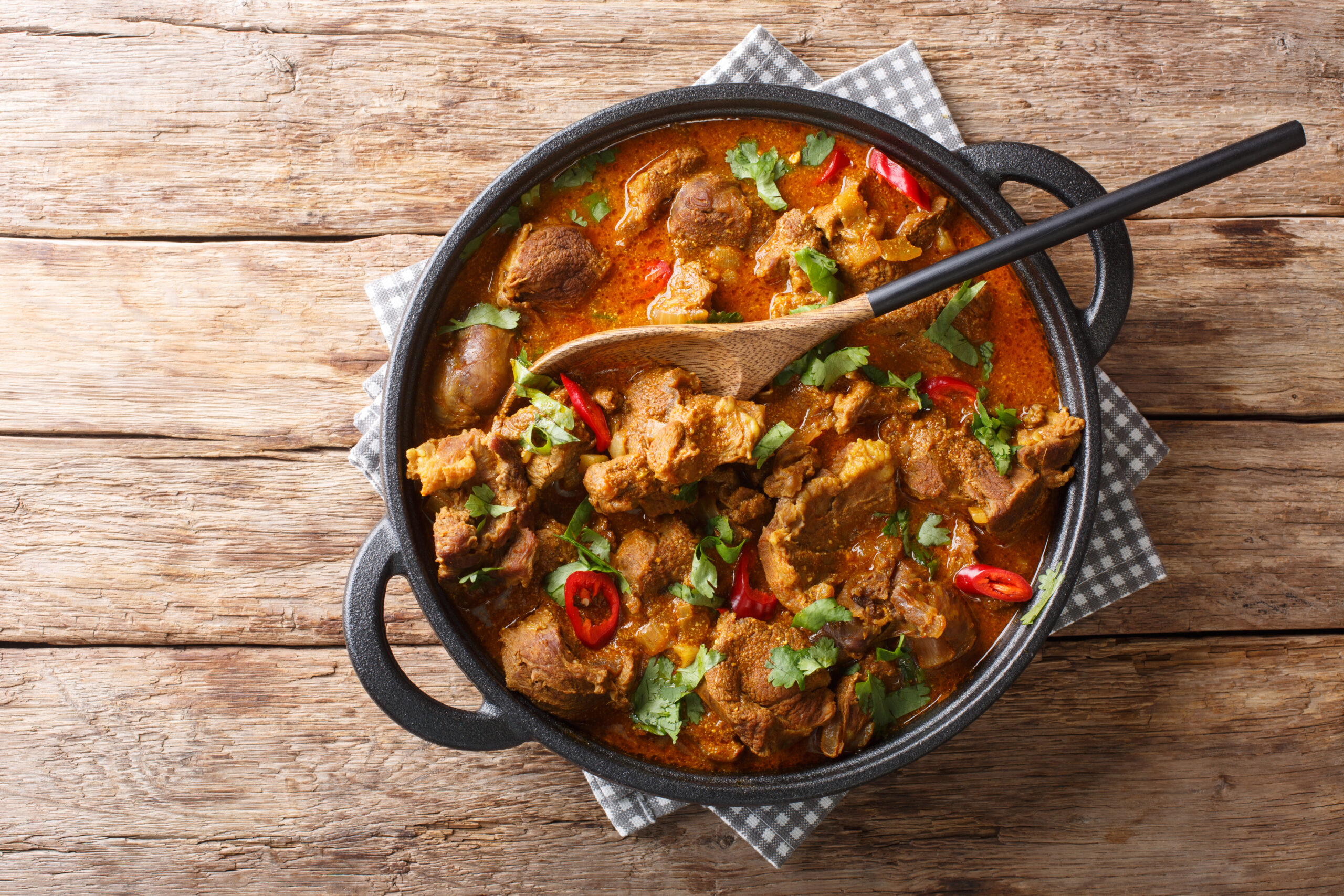
Rogan Josh topped with Kashmiri red chilies for vibrant color and mild spice.

Biryani made with Kashmiri red chili, adding bright color and gentle flavor.
Creative Ways to Use Kashmiri Red Chili
Beyond curries and gravies, Kashmiri red chili adds color and character to everyday cooking. Try these creative uses:
-
Chili oil: Infuse it in warm oil for drizzling over noodles, eggs, or stir-fries.
-
Flavored butter: Blend chili powder into butter for grilled corn or garlic bread.
-
Masala blends: Mix with cumin and coriander for a homemade all-purpose seasoning.
-
Soups and sauces: Add a pinch for warmth and a rich red tone.
-
Roasted snacks: Sprinkle over roasted nuts or chickpeas for mild, smoky heat.
Flavor Pairings
Kashmiri red chili pairs best with ingredients that enhance its color and flavor:
-
Spices: Cumin, coriander, turmeric, and garam masala bring balance and warmth.
-
Aromatics: Onion, garlic, and ginger deepen its earthy sweetness.
-
Proteins: Paneer, chicken, fish, and lentils absorb its mild spice beautifully.
-
Bases: Tomato and yogurt highlight its color while softening the heat.
-
Fats: Ghee or mustard oil helps release its rich red hue.
Together, these pairings create the harmony Kashmiri chili is known for; vibrant color, gentle spice, and smooth flavor.
Quick Tips to Get the Best Out of it
-
Bloom in oil: Heat gently in oil or ghee to release its color and aroma.
-
Avoid high heat: Overcooking can darken the chili and turn it bitter.
-
Mix for balance: Combine with regular chili powder for both heat and color.
-
Add toward the end: Keeps its color bright and flavor fresh.
-
Use in small amounts: Even a teaspoon can transform the look of a dish.
Handled right, Kashmiri red chili adds warmth and beauty without ever stealing the spotlight.
How to Identify Pure Kashmiri Red Chili
With so many look-alike chili powders on the market, spotting the real Kashmiri red chili takes a bit of awareness.
-
Color: Pure Kashmiri chili has a deep crimson or brick-red tone — never too bright or orange.
-
Aroma: It smells mildly smoky and earthy, not overly spicy or synthetic.
-
Texture: Finely ground with a natural sheen, without visible flakes of seeds or lumps.
-
Taste: Warm and slightly sweet with gentle heat, it should color food more than burn the palate.
-
Label: Look for trusted brands or origin mentions like “grown in Kashmir” or “GI-certified.”
Authentic Kashmiri chili brings both color and calm, no artificial dye, no harsh heat, just pure flavor.
Substitutes
If you can’t find authentic Kashmiri red chili, a few close alternatives can offer similar color and flavor.
-
Byadgi Chili (Karnataka): Deep red like Kashmiri chili but slightly hotter, making it the closest match.
-
Deggi Mirch (North India): A blend of Kashmiri and regular chili powders, offering balanced heat and vibrant color.
-
Paprika (International): Milder and sweeter, works well for color but lacks the earthy Indian aroma.
-
Reshampatti (Gujarat): Hotter and less fragrant, best used in small amounts when color is secondary.
How to Store It Right
Proper storage keeps Kashmiri red chili bright, aromatic, and full of flavor.
-
Use airtight containers: Glass jars work best to protect its color and aroma.
-
Keep away from sunlight: Store in a cool, dark cupboard to prevent fading.
-
Avoid moisture: Even slight humidity can dull flavor and cause clumping.
-
Don’t mix batches: Add new chili powder only after the old one is finished to maintain freshness.
-
Shelf life: Best used within 6–8 months for peak color and taste.
Nutritional Value (Per Teaspoon – Approx. 2.5g)
A small serving of Kashmiri red chili adds color, aroma, and a light nutritional boost without excess heat.
-
Calories: 8 kcal
-
Carbohydrates: 1.4 g
-
Protein: 0.3 g
-
Fat: 0.1 g
-
Fiber: 0.5 g
-
Vitamin C: 4 mg
-
Carotenoids: High (responsible for its deep red color)
Health Benefits
Kashmiri red chili offers more than color — it’s also packed with nutrients that support overall wellness.
-
Rich in antioxidants: Helps protect cells from oxidative stress (Source).
-
Vitamin C boost: Strengthens immunity and promotes healthy skin (Sources 1, 2).
-
Aids metabolism: Mild capsaicin supports fat metabolism without intense heat (Source).
-
Improves digestion: Gentle spice stimulates digestive enzymes naturally (Source).
-
Promotes circulation: The warmth enhances blood flow and energy (Source).
Final Thoughts
Kashmiri red chili is valued in everyday cooking for its strong color and mild heat. It helps maintain the look and balance of a dish without overpowering other ingredients. Its reliable flavor and bright appearance make it a common choice in curries, marinades and spice blends across India.
Whether you use it on its own or mix it with hotter chilies, it is a practical pantry staple that supports consistent results. If you want good color and controlled spiciness in your food, this chili is one of the most useful options to keep at home.
FAQs
Is Kashmiri red chili very spicy?
No, it’s known for its mild heat and rich color. It adds depth and vibrancy without making dishes overly hot.
What dishes use Kashmiri red chili the most?
It’s a staple in Rogan Josh, tandoori marinades, biryanis, and many North Indian curries for its color and balanced flavor.
Can I use paprika instead of Kashmiri red chili?
Yes, paprika offers similar color but is milder and lacks the earthy aroma unique to Kashmiri chili.
How can I enhance its color while cooking?
Gently bloom the chili in oil or ghee before adding other ingredients. This releases its natural pigments and rich aroma.
Is Kashmiri red chili good for health?
Yes. It’s rich in antioxidants, vitamin C, and carotenoids that support immunity, skin health, and metabolism.
How do I store Kashmiri red chili powder?
Keep it in an airtight glass jar, away from sunlight and moisture, to preserve its bright color and flavor for up to 8 months.
Learn More About Kashmiri Red Chili
Wikipedia – Kashmiri Red Chili
LinsFood – What is Kashmiri Chilli and How to Use It?
A short, engaging article highlighting the color and flavor of Kashmiri chilli and its uses. Also covers tips for identifying pure, authentic powder, the risk of adulteration, and guidance on safe, balanced use in cooking.


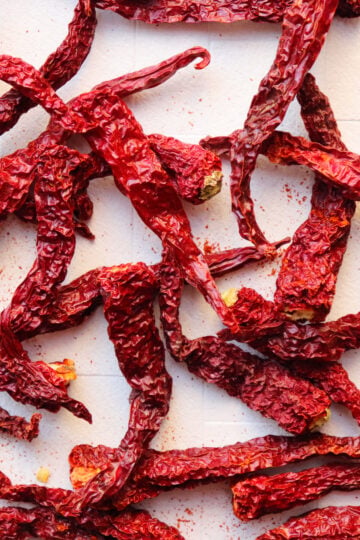
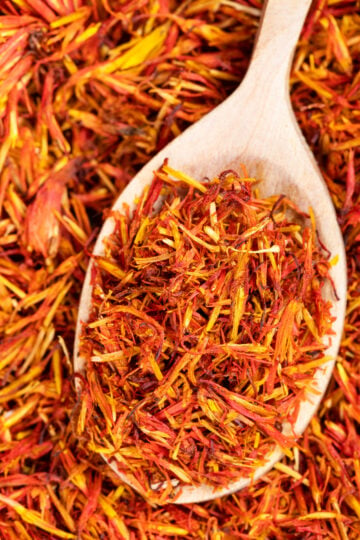
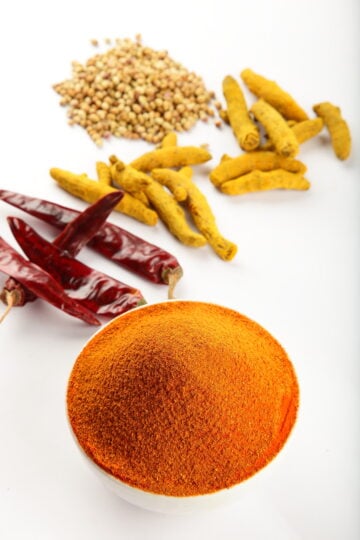
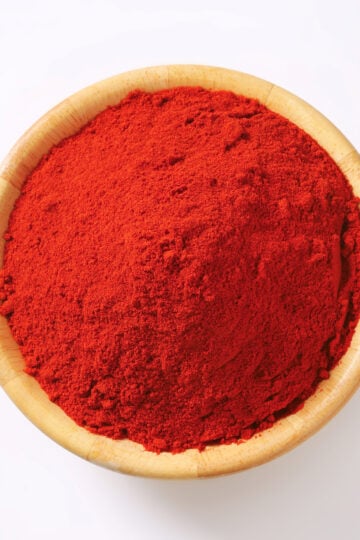
Have a question or something to share? Leave a comment below!